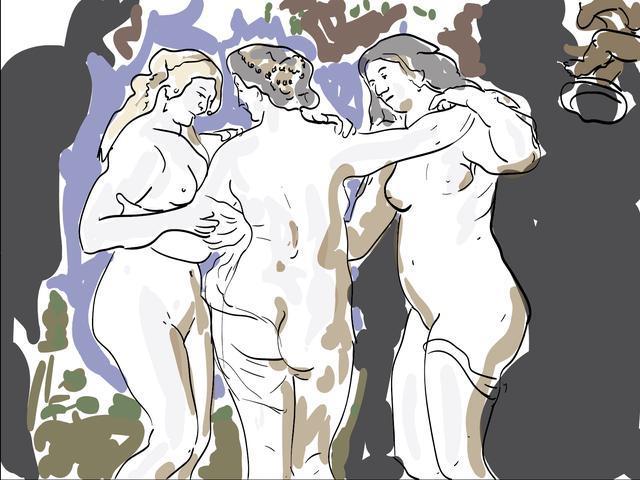The three Graces

The Three Graces, a masterpiece by the renowned baroque painter Pedro Pablo Rubens, is a captivating painting that can be admired at the prestigious Prado Museum in Madrid, Spain. Originally kept in Rubens' own home, this stunning piece of art is a true testament to the artist's exceptional talent and unique interpretation of mythological themes. Measuring an impressive 221 cm in height and 181 cm in width, The Three Graces is a striking oil painting that showcases Rubens' mastery of the medium.
In this painting, Rubens presents a fresh and innovative take on the mythological figures of the Graces, who are the daughters of Zeus in Greek mythology. Unlike previous depictions by artists such as Rafael Sanzio, Rubens infuses his work with a sense of sensuality and vitality that sets it apart. The three Graces - Aglaia, Talia, and Euphrosyne - are portrayed as confident and exuberant figures, their curves and contours rendered with a palpable sense of realism and freshness.
The composition of The Three Graces is a true marvel, with the three figures forming a harmonious triangle that exudes elegance and unity. The Graces are depicted intertwined through their arms, gazes, and a transparent veil that covers them, creating a sense of psychological connection between them. The painting radiates with warmth and luminosity, thanks to Rubens' skillful use of color and light, which illuminates the trio and the picturesque landscape in the background.
One of the most striking aspects of The Three Graces is the attention to detail in the rendering of the figures' flesh, which appears soft, supple, and almost lifelike. The trio is framed by a tree on the left and a golden cornucopia on the right, symbolizing abundance and fertility. The overall composition of the painting is a testament to Rubens' artistic genius and his ability to breathe life and emotion into his subjects.
Acquired by King Philip IV of Spain after Rubens' death, The Three Graces adorned the walls of the Alcázar of Madrid before finding its permanent home at the Prado Museum in the 19th century. Today, this iconic painting continues to captivate visitors with its beauty, grace, and timeless appeal. A true masterpiece of baroque art, The Three Graces is a must-see for art lovers and enthusiasts visiting Madrid.
© ChatGPT 3.5
It is said that at least one of the figures is a reproduction of Rubens's second wife, Helena Fourment, or even variations on the same face of his wife. Others believe they recognize the features of the painter's two wives: Isabella Brant and the aforementioned Helena Fourment.